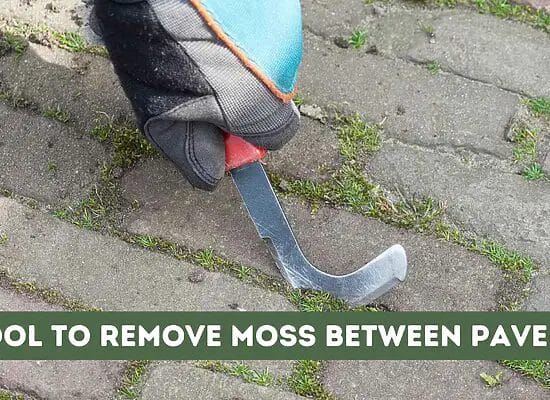
Are you planning to spend a night around your fire pit? While it may seem like a cozy idea, leaving a fire pit burning overnight is not recommended. Fire pit burnout and fire risk are both things that you’ll have to deal with when doing so. It’s always better to keep the fire pit burning during daylight hours, no matter how cold it may get.
Leaving a fire pit burning overnight is illegal in all states throughout the USA. A gust of wind can blow the hot embers around, catching trees and grass in the surrounding area on fire. Always ensure your fire is completely out when you are done. But sometimes, you might feel inclined to leave the fire pit burning so you can retire for the night.
Campfires and fire pits offer the perfect opportunity to cherish moments with the ones who matter most to you. Nevertheless, it’s important to recognize that leaving a fire burning or lit overnight can lead to unwanted complications. Fortunately, you can ensure everyone’s safety by diligently extinguishing the fire thoroughly at the end of each use.
Key takeaways:
- Leaving a fire pit burning overnight is not recommended and is illegal in all states in the USA.
- Risks of leaving a fire pit burning overnight include fire hazard, carbon monoxide poisoning, property damage, and the risk of injury.
- Basic safety guidelines include always extinguishing the fire completely, using a fire pit cover, keeping a fire extinguisher or bucket of water nearby, and not placing the fire pit near flammable materials.
- Preventing fire pit accidents involves keeping a fire extinguisher nearby, protecting your property, supervising children and pets, and being considerate of your neighbors.
- Methods to extinguish a fire pit include using water, sand, or dirt.
- Legal considerations for fire pits include checking local regulations, following fire safety practices, and being aware of the potential fines and penalties for leaving a fire pit burning overnight.
- Fire pit maintenance and care involve ash removal, using dry and seasoned firewood, removing twigs and debris before starting a fire, and using screens or covers.
The Risks of Leaving a Fire Pit Burning Overnight
Leaving a fire pit burning overnight can be a tempting idea, especially if you’re enjoying a relaxing evening outdoors. However, it’s important to be aware of the risks involved in doing so. Here are some potential dangers to consider:
- Fire Hazard: Leaving a fire pit burning overnight can increase the risk of a fire. Hot embers can escape the pit and ignite nearby flammable materials, such as dry leaves or grass. A gust of wind can also blow embers onto your property or your neighbor’s property, causing damage or injury.
- Carbon Monoxide Poisoning: Fire pits produce carbon monoxide, a colorless and odorless gas that can be deadly in high concentrations. If you leave a fire pit burning overnight, the carbon monoxide can accumulate in your outdoor space and pose a serious health hazard to you and your family.
- Property Damage: A fire pit that’s left burning overnight can cause damage to your property. The intense heat can scorch your lawn or melt nearby objects, such as plastic furniture or toys.
- Injury: If you leave a fire pit burning overnight, there’s a risk that someone could accidentally step into the pit and suffer burns or other injuries. Children and pets are especially vulnerable to this type of accident.
To minimize the risks of leaving a fire pit burning overnight, it’s important to follow some basic safety guidelines. Here are a few tips to keep in mind:
- Always extinguish the fire completely before leaving the fire pit unattended.
- Use a fire pit cover to prevent hot embers from escaping the pit.
- Keep a fire extinguisher or a bucket of water nearby in case of an emergency.
- Don’t place the fire pit near flammable materials, such as trees or bushes.
- Never leave children or pets unattended near a fire pit.
Preventing Fire Pit Accidents
When it comes to fire pit safety, prevention is key. Taking the necessary precautions can help prevent accidents and ensure that you and your loved ones stay safe. Here are some tips to help you protect yourself, your neighbors, and your property:
- Keep a fire extinguisher nearby: A fire extinguisher is an essential tool to have on hand in case of an emergency. Make sure you know how to use it and keep it within easy reach.
- Protect your property: Keep your fire pit at least 10 feet away from any structures or flammable materials, such as trees, bushes, or dry grass. Use a fireproof mat or bricks underneath your fire pit to prevent heat damage to your patio or deck.
- Supervise children and pets: Never leave children or pets unattended near a fire pit. Teach your children about fire safety and make sure they understand the dangers of playing with fire.
- Be considerate of your neighbors: Smoke from your fire pit can be a nuisance to your neighbors. Make sure your fire pit is not causing a disturbance, and consider the wind direction when lighting your fire.
- Follow local regulations: Check your local regulations to make sure you are allowed to have a fire pit in your area. Some areas may have restrictions on the type of fuel you can use or the time of day you can use your fire pit.
How to Extinguish a Fire Pit
If you’re wondering how to put out a fire pit, there are a few ways to do it safely and effectively. In this section, we’ll cover three methods: using water, using sand, and using dirt.
Using Water
One of the most common ways to extinguish a fire pit is by using water. It’s important to use enough water to completely extinguish the fire and prevent any smoldering embers from reigniting. Here’s how to do it:
- Fill a bucket or hose with water.
- Pour the water onto the fire, starting at the edges and working your way towards the center.
- Stir the ashes and embers with a shovel or stick to ensure that all parts of the fire are wet.
- Continue adding water and stirring until the fire is completely out.
Using Sand
Another way to extinguish a fire pit is by using sand. Sand is a good option if you don’t have access to water or if you want to avoid getting your fire pit too wet. Here’s how to use sand to put out a fire pit:
- Pour a thick layer of sand over the fire, starting at the edges and working your way towards the center.
- Use a shovel or stick to stir the sand and ashes together.
- Continue adding sand and stirring until the fire is completely out.
Using Dirt
If you don’t have access to water or sand, you can also use dirt to extinguish a fire pit. Here’s how:
- Scoop dirt onto the fire with a shovel, starting at the edges and working your way towards the center.
- Use a stick or shovel to stir the dirt and ashes together.
- Continue adding dirt and stirring until the fire is completely out.
No matter which method you choose, it’s important to make sure that the fire is completely extinguished before leaving it unattended. This means that there should be no smoke, flames, or smoldering embers. Use caution when handling hot ashes and embers, and always dispose of them in a metal container.
Legal Considerations for Fire Pits
When it comes to fire pits, there are a few legal considerations you need to keep in mind. Leaving a fire pit burning overnight is illegal in every U.S. state, and it can result in a hefty fine and even a prison sentence. It’s important to always follow fire safety practices and extinguish the fire completely before heading indoors.
In addition to the legal ramifications, there are also safety concerns to consider. Unattended fires can quickly get out of control and pose a risk to your home, your neighbors, and nearby trees. It’s important to keep your fire pit in a safe location, away from any flammable materials, and at a safe distance from your home and any nearby structures.
Before you start using your fire pit, it’s a good idea to check your local laws and regulations. Some areas may have specific rules about the size and type of fire pit you can use, as well as restrictions on when and where you can use it. Contact your local fire department or government offices to learn about any regulations in your area.
When using your fire pit, always keep a close eye on it and never leave it unattended. Keep a bucket of water or a fire extinguisher nearby in case of emergency, and never use flammable liquids to start or fuel the fire. It’s also important to be considerate of your neighbors and avoid creating excessive smoke or noise.
Fire Pit Maintenance and Care
Maintaining your fire pit is crucial to ensure its longevity and safety. Here are some tips to help you take care of your fire pit:
Ash Removal
After each use, remove the ashes from the fire pit. Ash buildup can prevent proper airflow and cause the fire to burn less efficiently. Use a shovel or ash scoop to remove the ashes and dispose of them in a metal container.
Firewood
Use only dry, seasoned firewood in your fire pit. Wet or green wood can create excessive smoke, cause a buildup of creosote, and increase the risk of a chimney fire. Do not burn trash or pressure-treated wood, as they can release harmful toxins that are unhealthy to breathe and may damage fire pit surfaces.
Twigs and Debris
Before starting a fire, remove any twigs, leaves, or debris from the fire pit. These materials can easily ignite and cause sparks to fly out of the fire pit, increasing the risk of a fire.
Screens and Fire Pit Covers
Consider using a spark screen or fire pit cover to prevent sparks and embers from flying out of the fire pit. A cover can also protect your fire pit from rain, snow, and other weather elements.
Gas Line Maintenance
If you have a gas fire pit, make sure to inspect the gas line for leaks regularly. Check the gas connections and hoses for any signs of wear or damage. If you notice any issues, turn off the gas supply and have a professional inspect and repair the gas line.
Pro Tip: To keep your fire pit looking new, apply a coat of high-temperature paint to the exterior every season. This will help prevent rust and keep your fire pit looking great for years to come.
The Effects of Weather on Fire Pit Safety
When it comes to fire pit safety, weather conditions play a crucial role. Here are some factors to consider:
Wind
Wind can significantly affect the safety of your fire pit. Strong winds can blow embers and sparks out of the pit, igniting nearby flammable materials such as grass, leaves, or even your house. To avoid this, make sure to check the weather forecast before lighting your fire pit. If it’s windy, it’s best to wait for calmer conditions.
Rain
Rain can also have an impact on fire pit safety. Wet wood and other materials can be challenging to ignite, causing you to use more accelerants, such as lighter fluid. This can increase the risk of a fire getting out of control. Additionally, rain can cause the fire pit to become slippery, increasing the risk of accidents. If it’s raining, it’s best to avoid using your fire pit altogether.
Grass
Grass is highly flammable and can easily ignite if it comes into contact with embers or sparks from your fire pit. To avoid this, make sure to place your fire pit on a non-flammable surface such as concrete, gravel, or sand. If you have to place it on grass, make sure to clear the area around the pit of any dry grass, leaves, or other flammable materials.
Igniting
When lighting your fire pit, it’s essential to use the right materials and techniques. Using too much accelerant, such as lighter fluid, can cause the fire to get out of control quickly. Instead, use kindling, newspaper, or fire starters to ignite your fire. Also, keep a fire extinguisher or a bucket of water nearby in case of an emergency.
Accelerants
Using accelerants such as gasoline, kerosene, or lighter fluid to start your fire pit is not only dangerous but also illegal in many places. These substances can cause explosions and severe burns, and they can also release toxic fumes that can be harmful to your health. Instead, use natural fire starters such as kindling, newspaper, or dry leaves.
FAQ: Can You Leave a Fire Pit Burning Overnight?
When is it safe to leave a fire pit unattended?
It is never safe to leave a fire pit burning unattended, especially overnight. Even if the fire appears to be out, embers can remain hot and reignite, causing a fire hazard. Always make sure the fire is completely extinguished before leaving the fire pit.
How long can a fire pit burn?
The length of time a fire pit can burn depends on the size of the fire pit and the amount of fuel used. Generally, a fire pit can burn for 3-4 hours with one load of wood. However, it is not recommended to leave the fire pit burning for longer than necessary.
How do you keep a fire pit burning all night?
It is not recommended to keep a fire pit burning all night, as this can be a fire hazard. If you must keep the fire pit burning for an extended period, make sure to keep it attended and add small amounts of fuel as needed.
What are some alternatives to using water to put out a fire pit?
Sand, dirt, or a fire extinguisher can be used to put out a fire pit instead of water. Water can cause hot embers to splatter and potentially cause injuries.
Is it legal to leave a fire pit burning overnight?
Leaving a fire pit burning overnight is generally not legal and can result in fines or other penalties. Always check with your local authorities to determine the specific regulations for your area.
What is the best way to put out a fire in a metal fire pit?
To put out a fire in a metal fire pit, allow the fire to burn down to ash and embers. Then, use sand or dirt to smother the fire and make sure it is completely extinguished before leaving the fire pit.












